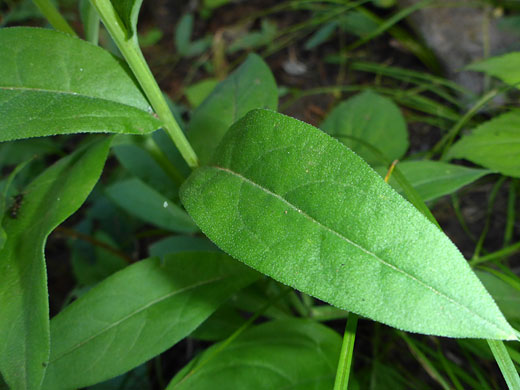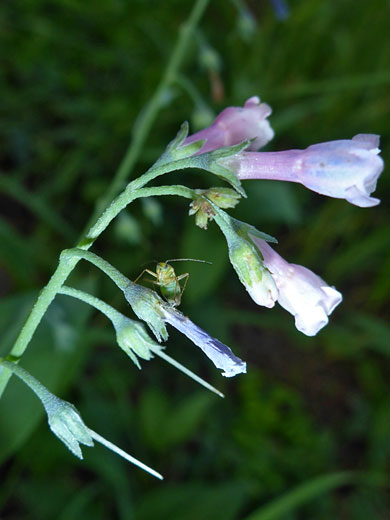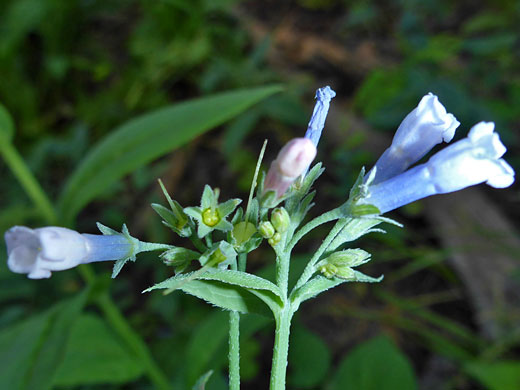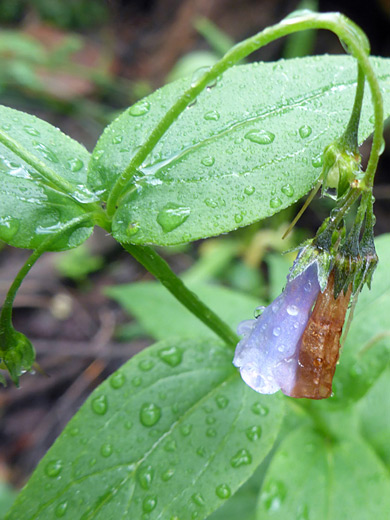Mertensia Franciscana, Franciscian Bluebells
Plants > Wildflowers > Boraginaceae > Mertensia Franciscana
Common name:
Franciscian bluebells
Family:
Scientific name:
Mertensia franciscana
Main flower color:
Range:
The Four Corners states, and a small part of east Nevada
Height:
Up to 3 feet
Habitat:
Moist woodland, meadows, streamsides; 6,000 to 12,000 feet
Leaves:
Ovate to elliptic; up to 6 inches long and 3.5 inches wide
Season:
May to September
The calyces of mertensia franciscana are quite distinctive; they are dark green in color, divided into five narrowly lanceolate lobes, and their margins and (less densely) faces are covered with relatively long, spreading white hairs. Flower stalks are similar in color and hairiness. The pendent flowers are pink to purple when in bud and blue when fully open, withering to darker blue and then brown. The corolla lobes are shorter than the tube.
Leaves have a center vein, a pair of fainter side veins branching from the base, and other side veins higher up. The upper leaf surfaces are usually finely strigose hairy, while the lower surfaces have a generally denser hair covering, though may sometimes be hairless. Stem and leaves are hairy. Stem leaves are mostly sessile but those near the base may have short stalks. Plants typically produce several stems, ascending to erect.
Leaves have a center vein, a pair of fainter side veins branching from the base, and other side veins higher up. The upper leaf surfaces are usually finely strigose hairy, while the lower surfaces have a generally denser hair covering, though may sometimes be hairless. Stem and leaves are hairy. Stem leaves are mostly sessile but those near the base may have short stalks. Plants typically produce several stems, ascending to erect.
All Contents © Copyright The American Southwest | Comments and Questions | Contribute | Site Map










